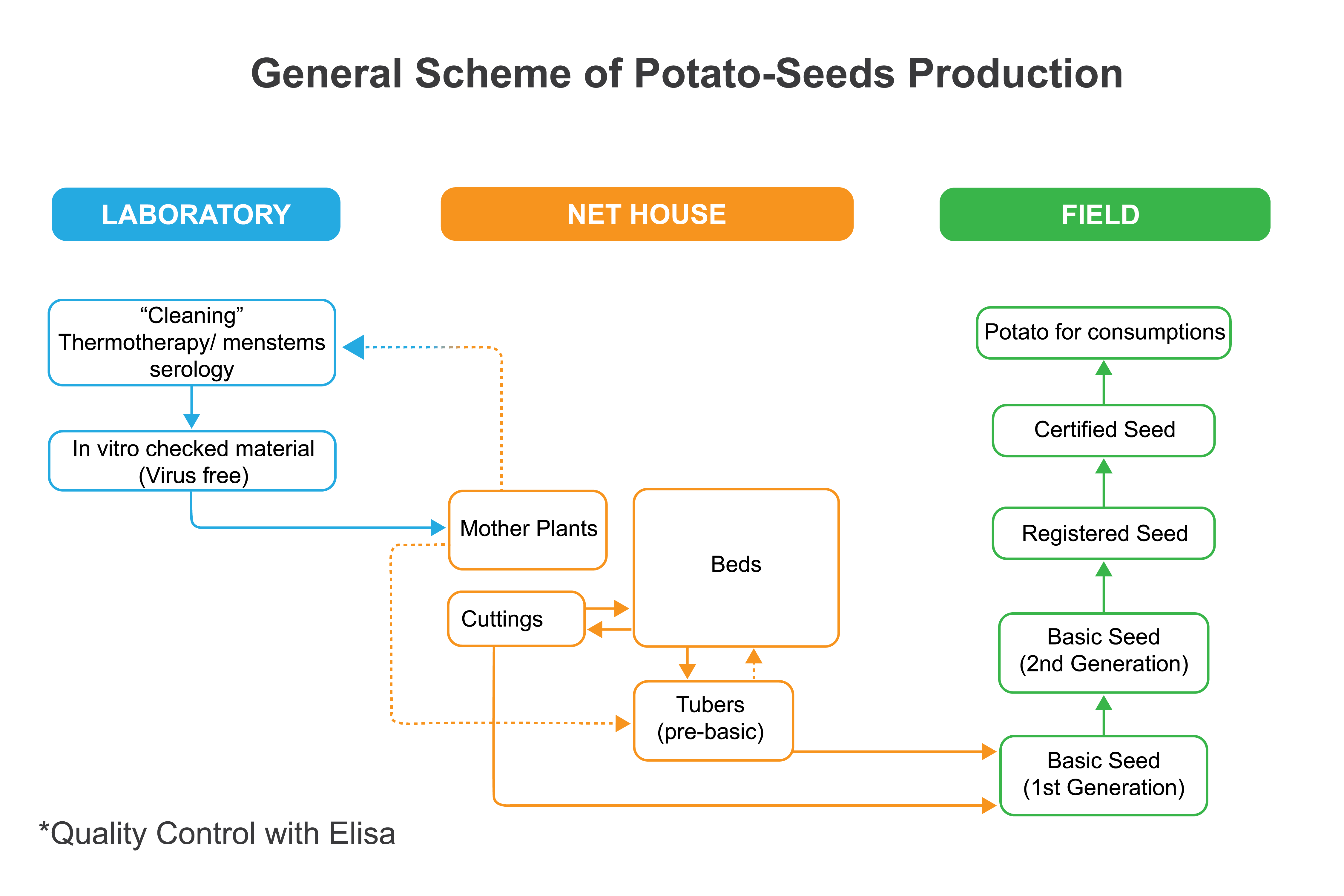Introduction:
In the fertile lands of Bangladesh, where agriculture plays a pivotal role in the economy and sustenance of its people, potato cultivation stands out as a cornerstone of food production. Known as the “poor man’s food” or the “second staple” in the country, potatoes have become an integral part of the Bangladeshi diet. This blog delves into the art of potato cultivation in Bangladesh, exploring the agricultural practices, challenges, and the socioeconomic significance of this humble tuber.
1. Climatic Conditions and Varieties:
Bangladesh’s diverse climatic conditions contribute to the success of potato cultivation across the country. With a range of agro-ecological zones, farmers can grow potatoes throughout the year. The primary potato-growing seasons are Rabi (winter) and Kharif (summer), with variations based on altitude and region.
Farmers in Bangladesh cultivate various potato varieties, including Granola, Diamant, Cardinal, and Bellini. These varieties are chosen based on factors such as yield, resistance to diseases, and adaptability to local conditions.
2. Land Preparation and Planting:
Potato cultivation in Bangladesh begins with meticulous land preparation. Farmers plow and harrow the soil to create a fine seedbed. Well-drained and loamy soils are preferred for optimum potato growth. The planting process typically involves cutting seed potatoes into pieces, each containing at least one eye, and then planting them in rows.
Farmers often employ modern techniques such as raised bed planting to enhance drainage and prevent waterlogging, ensuring a conducive environment for healthy potato growth.
3. Fertilization and Irrigation:
Nutrient management is crucial for successful potato cultivation. Farmers in Bangladesh apply a combination of organic and inorganic fertilizers to meet the nutritional needs of the crop. Commonly used fertilizers include urea, triple superphosphate, and muriate of potash.
Irrigation is another critical aspect, especially during the dry season. Efficient water management ensures optimal tuber formation and reduces the risk of diseases. Drip irrigation systems have gained popularity for their water-saving benefits and improved efficiency.
4. Pest and Disease Management:
Potato crops in Bangladesh face various challenges from pests and diseases, including late blight, early blight, and potato cyst nematode. Integrated pest management (IPM) practices are increasingly being adopted by farmers to minimize the use of chemical pesticides and promote sustainable cultivation.
Crop rotation, resistant varieties, and the use of biopesticides are essential components of IPM strategies. Government extension services play a crucial role in educating farmers about these practices and providing timely information on pest and disease management.
5. Harvesting and Post-Harvest Management:
Potatoes are typically ready for harvesting 90 to 120 days after planting. Harvesting is done manually, with farmers carefully lifting the tubers from the soil to avoid damage. Proper curing and storage are crucial to prevent post-harvest losses.
In Bangladesh, traditional storage methods like pit storage and modern techniques such as cold storage facilities are used to ensure a steady supply of potatoes throughout the year. The government has also implemented initiatives to improve post-harvest infrastructure and reduce wastage.
6. Socioeconomic Impact:
Potato cultivation plays a vital role in the socioeconomic landscape of Bangladesh. It serves as a source of livelihood for millions of smallholder farmers, contributing to rural development and poverty alleviation. The versatility of potatoes as a food source and the demand for processed potato products further enhance its economic significance.
Conclusion
Potato cultivation in Bangladesh is more than just a farming practice; it is a way of life that sustains communities and drives economic growth. The journey from soil preparation to harvest reflects the resilience and resourcefulness of Bangladeshi farmers. As the country continues to focus on agricultural development, potato cultivation remains a beacon of hope, nourishing both the land and its people.




